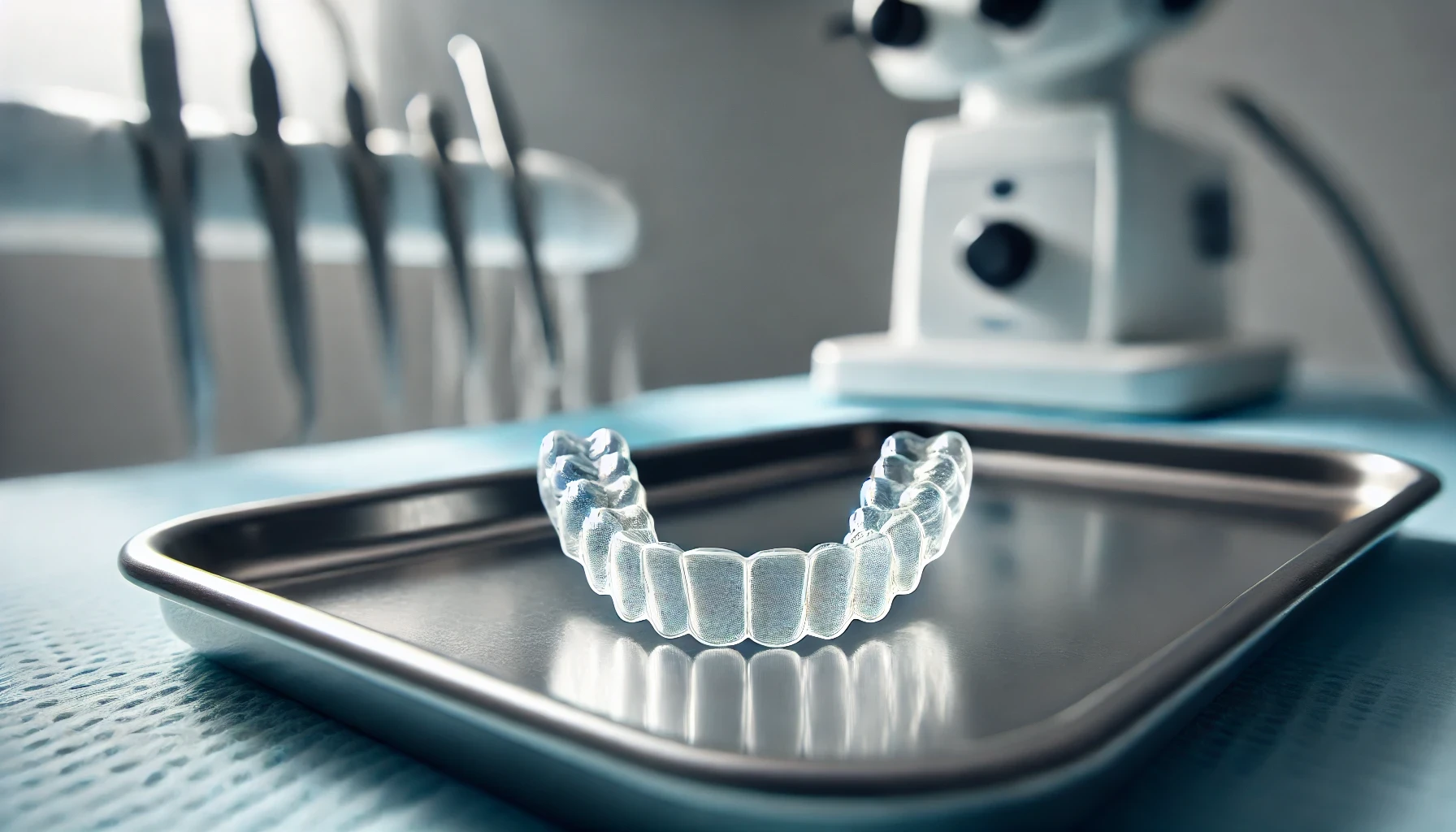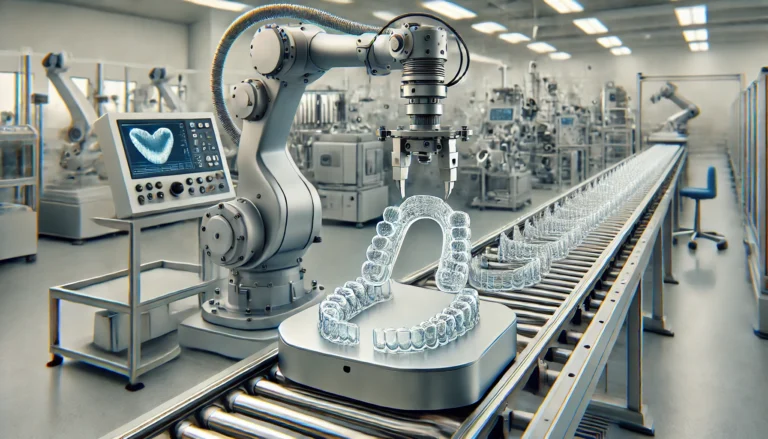
If you are contemplating Invisalign to attain a straighter smile, you might be curious about the duration of the treatment and the factors that influence how long it takes. So, how long does Invisalign take to straighten teeth in the UK?
This article delves into the typical treatment timeline, highlighting the benefits of using clear aligners as well as the potential risks associated with them.
Additionally, it offers practical tips for caring for your aligners and guides you in determining whether Invisalign is the right option for you.
Prepare to discover all the essential information you need regarding your journey toward a beautiful smile!
How Long Does Invisalign Take to Straighten Teeth in the UK?

Invisalign is a groundbreaking teeth straightening solution that has gained significant popularity in the UK. It is specifically designed to improve alignment and enhance one’s smile without the conspicuous appearance of traditional metal braces.
The duration of the Invisalign treatment can vary based on several factors, such as the degree of misalignment, the patient’s adherence to the aligner wear schedule, and the specific treatment plan established by the orthodontist during the initial consultation.
Factors That Affect Treatment Time
Several factors can influence the treatment time for Invisalign, which in turn affects how quickly patients can achieve their desired tooth alignment and smile improvement.
One of the key factors is the patient’s age; younger individuals often have more adaptable dental structures, allowing for quicker adjustments compared to adults. Additionally, the severity of bite issues plays a significant role in determining treatment duration. Patients with complex malocclusions may require a more extended treatment plan to reach their desired results.
Compliance with the aligner wear schedule is also crucial. Consistent wear is necessary to ensure that the treatment progresses as intended. Furthermore, the complexity of the necessary teeth movements adds another layer of consideration, as intricate shifts typically require a longer time frame.
Given these variables, an orthodontic evaluation and thorough dental assessments are essential to effectively tailor the Invisalign procedure to each individual.
Typical Treatment Time for Invisalign
The typical treatment time for individuals using Invisalign can vary, but most patients notice significant teeth straightening results within an average timeframe of 12 to 18 months, tailored to their specific needs.
Several factors influence this timeline, including the complexity of each case and the patient’s dedication to wearing the aligners for the recommended 20 to 22 hours daily. Regular appointments to track progress with a dental professional are essential, as they help ensure the treatment remains on course and allow for timely adjustments to the aligners.
Patients often find their satisfaction improves when they witness progress along the way, as monitoring advancements can help maintain motivation.
In the end, grasping the details of treatment optimisation can lead to effective results and a smoother overall journey towards achieving that desired smile.
What Are the Benefits of Invisalign?
Invisalign presents several advantages over traditional orthodontic options, which is contributing to its rising popularity among individuals seeking orthodontic treatment in the UK.
The clear and removable aligners not only improve the aesthetic appeal of one’s smile but also offer greater convenience for users who wish to maintain their lifestyle while pursuing excellent oral health.
Clear and Removable Aligners
One of the notable advantages of Invisalign is that it utilises clear and removable aligners, offering a discreet option compared to traditional metal braces while still ensuring effective tooth alignment.
These aligners are meticulously crafted to fit snugly over the teeth, applying gentle pressure to gradually shift them into the desired positions. Many patients find the comfort level of clear aligners appealing, as they are custom-made from smooth plastic, thereby reducing irritation to the gums and cheeks—a common problem associated with wires and brackets.
Additionally, the ability to easily remove these aligners allows for convenient eating and oral care. This flexibility not only enhances the overall experience of orthodontic treatment but also encourages better hygiene, as patients can brush and floss without any obstructions.
Comfortable and Customised Treatment
Invisalign provides a comfortable and personalised treatment experience, as each aligner is specifically crafted using advanced 3D imaging technology based on individual dental impressions.
This careful customisation process guarantees that every aligner fits snugly over the teeth, enhancing comfort during wear and reducing any potential irritation. Patients can look forward to receiving aligners that not only cater to their unique dental structure but are also engineered to promote gradual teeth movement without sacrificing comfort.
Proper maintenance of the aligners, including regular cleaning and timely transitions to the next set, is essential for achieving the best possible results.
Additionally, regular follow-up appointments are important for monitoring progress and making any necessary adjustments, ensuring that the treatment remains on track while providing the highest level of comfort throughout the entire process.
Less Time Spent at the Dentist
With Invisalign, patients experience the advantage of spending less time in the dentist’s surgery compared to traditional braces, leading to a more efficient orthodontic treatment process. This innovative system simplifies the logistics of dental visits and enhances the overall patient experience.
Typically, each set of aligners is worn for about one to two weeks, allowing individuals the flexibility to make necessary adjustments at home, which reduces the number of in-surgery appointments needed. Digital monitoring tools also enable orthodontists to track progress remotely, ensuring that treatment remains on track without requiring frequent visits.
As a result, patients can continue with their regular activities and schedules with minimal disruption, all while benefiting from effective alignment and achieving the smile transformation they desire.
What Are the Potential Risks of Invisalign?

Invisalign is indeed a popular and effective option for teeth straightening; however, it is important for individuals to be aware of the potential risks that may arise during the treatment process.
This awareness is crucial for ensuring a well-informed patient experience.
Discomfort and Soreness
It is quite common for patients to experience some discomfort and soreness when adjusting to new Invisalign aligners, as each set is specifically designed to gradually shift teeth into the desired position.
Initially, this discomfort may present as a feeling of pressure or tightness, which is a natural part of the alignment process. Typically, this sensation will diminish within a few days as the mouth adapts to the new aligners.
To effectively manage any potential discomfort, it is crucial for patients to adhere to their treatment plan and follow the orthodontist’s recommendations. Utilising over-the-counter pain relief, maintaining proper oral hygiene, and sticking to a consistent cleaning routine can significantly alleviate discomfort and promote optimal oral health during this transition.
It is important to remember that while some discomfort is expected, it often indicates that the treatment is effectively working towards achieving that beautiful smile.
Speech Impediments
Some patients may experience speech difficulties during the initial adjustment period to their Invisalign aligners. This can be a temporary challenge as they get used to the new appliance.
During this phase, it is not uncommon for individuals to notice a slight lisp or difficulty pronouncing certain sounds, which can understandably lead to moments of frustration. It is essential to recognise that this experience is a common part of the journey when undergoing orthodontic treatment.
Most people find that their speech improves significantly within just a few days as they become more accustomed to the aligners. The brain quickly adapts to their presence, allowing for smoother articulation over time.
While the initial challenges may feel overwhelming, knowing that they are usually short-lived can provide reassurance and encourage patients to stay committed to their treatment.
Allergic Reactions
Whilst it is uncommon, some individuals may find themselves experiencing allergic reactions to the materials used in Invisalign aligners. This emphasises the importance of discussing any known allergies with the orthodontist.
Certain components, such as polyurethane and thermoplastic materials used in the production of aligners, can trigger sensitivities in some patients. Such reactions may present as irritation or inflammation in the mouth, highlighting the need for a thorough evaluation during the initial consultation.
It is essential for individuals to openly share their medical history, including any previous allergic reactions to dental materials. This information allows the orthodontist to create a safe and effective treatment plan tailored to the patient’s needs.
By prioritising safety and using compatible materials, dental professionals can significantly decrease the risk of adverse reactions while providing effective alignment solutions.
How to Care for Your Invisalign Aligners?
Taking proper care of your Invisalign aligners is essential for ensuring their effectiveness and maintaining optimal oral hygiene during the treatment process.
Cleaning and Maintenance
Cleaning and maintaining your Invisalign aligners is crucial for preventing bacteria build-up and ensuring they remain clear and effective for moving your teeth.
To achieve the best results, it is important to establish a consistent oral care routine. This routine should include:
- Gently brushing the aligners every time you brush your teeth, using a soft-bristled toothbrush and non-abrasive toothpaste.
- Additionally, soaking the aligners in a specially formulated cleaner or a mixture of water and vinegar for a short period can help eliminate stubborn stains and odours, thereby enhancing overall hygiene.
Regular dental evaluations play a vital role as well. They allow your dentist to monitor the effectiveness of the treatment and make any necessary adjustments to the aligners, ensuring you achieve the best possible outcome on your journey to a straighter smile.
Tips for Wearing Invisalign Aligners
To maximise the effectiveness of Invisalign, patients should follow specific guidelines to ensure their aligners are worn comfortably and consistently throughout the treatment process.
It is recommended to wear the aligners for at least 22 hours each day, removing them only for eating, drinking, or practising oral hygiene. Transitioning between sets of aligners can be managed effectively by adhering closely to the prescribed schedule, which typically involves changing aligners every one to two weeks. Patience is essential during this adjustment period, as some individuals may experience mild discomfort initially.
Incorporating daily habits, such as keeping a cleaning kit readily available, can significantly enhance the overall experience and promote adherence to the treatment. Additionally, being mindful of dietary restrictions is crucial, as avoiding certain foods can extend the lifespan of each set of aligners. Maintaining good oral hygiene will further ensure a smooth journey towards achieving that perfect smile.
Is Invisalign Right for You?

Determining whether Invisalign is the right choice for you requires a thoughtful assessment of your dental needs, an evaluation of your suitability for the treatment, and careful consideration of factors such as the cost and your oral health goals.
Candidacy for Invisalign Treatment
Not everyone is an ideal candidate for Invisalign, as certain bite issues and gaps in the teeth may necessitate a different orthodontic treatment approach.
Conditions such as severe overbites, underbites, crossbites, and significant misalignment of the teeth can hinder the effectiveness of clear aligners. Additionally, patients with dental restorations, such as bridges, may encounter limitations when considering this treatment option.
This is why a comprehensive orthodontic evaluation is essential. It not only assesses the current alignment of the teeth but also takes into account the overall dental health. The dentist or orthodontist will evaluate the specific alignment concerns, treatment goals, and desired outcomes before determining if clear aligners are the most suitable choice.
Making informed decisions is crucial for achieving optimal results in orthodontic care.
Cost of Invisalign Treatment
The cost of Invisalign treatment can vary significantly based on individual needs, the duration of treatment, and the specific offerings of dental clinics. It is important for patients to be aware of their financial options.
Several factors play a vital role in determining the overall cost. For example, the complexity of the dental issues being addressed can greatly influence the length of treatment, which typically ranges from several months to a couple of years. This, in turn, impacts the total expense.
Insurance coverage can also have a considerable effect on out-of-pocket costs. Many insurance plans provide partial coverage for orthodontic treatments, which can help alleviate some of the financial burden.
By understanding these factors, patients can enhance their satisfaction and feel enableed to make informed decisions regarding their investment in oral health.
What to Expect After Invisalign Treatment?

Once you have completed your Invisalign treatment, it is essential to understand the proper aftercare to maintain the long-term results of your smile improvement journey.
Retainer Use
Using retainers is a crucial aspect of the post-Invisalign treatment journey. They play a vital role in ensuring that your teeth remain in their newly straightened positions and that the results are preserved for the long haul.
When individuals wear their retainers diligently, as directed by their orthodontist, they can effectively prevent the regression of their beautiful smiles and fully embrace their newfound confidence. This commitment to aftercare not only protects the investment made in orthodontic treatment but also cultivates a sense of ownership over one’s oral health.
Adhering to retainer schedules can significantly impact long-term success, highlighting that a small daily effort can make a substantial difference in maintaining a radiant, healthy smile—one that you can proudly showcase in any situation.
Follow-up Appointments
Regular follow-up appointments with your orthodontist are essential for monitoring progress and ensuring the ongoing success of your Invisalign treatment aftercare.
During these visits, patients can expect a comprehensive dental evaluation. The orthodontist will assess the fit and alignment of the aligners, ensuring each stage is effectively guiding the teeth into their ideal positions. This process allows for any necessary adjustments, optimising outcomes and improving the overall patient experience.
Depending on individual progress, the orthodontist may also offer guidance on maintaining oral hygiene and share tips to enhance treatment efficiency. Maintaining open communication during these follow-ups is vital for addressing any concerns and ensuring that patients feel supported throughout their journey to achieving a beautiful smile.
Frequently Asked Questions
What is Invisalign and how does it work?
Invisalign is a teeth straightening treatment that uses clear, custom-made aligners to gradually shift your teeth into the desired position. The aligners are worn for at least 22 hours a day and are changed every 1-2 weeks.
How long does Invisalign take to straighten teeth in the UK?
The duration of Invisalign treatment varies depending on the severity of your case and your compliance with the treatment plan. On average, it takes about 12-18 months for Invisalign to straighten teeth in the UK.
Can Invisalign fix all types of teeth misalignment?
Invisalign can effectively treat mild to moderate cases of teeth misalignment, including overcrowding, gaps, and bite issues. However, severe cases may require traditional braces or other orthodontic treatments.
Do I need to wear retainers after Invisalign treatment?
Yes, wearing retainers is an essential part of Invisalign treatment. They help maintain the new position of your teeth and prevent them from shifting back to their original position. Your orthodontist will recommend how long you need to wear retainers after treatment.
Is Invisalign treatment painful?
While there may be some discomfort during the first few days of wearing a new set of aligners, Invisalign treatment is generally not painful. This is because the aligners are made of smooth plastic and do not have any sharp wires or brackets that may irritate your mouth.
How much does Invisalign cost in the UK?
The cost of Invisalign treatment in the UK varies depending on the complexity of your case and the length of treatment. On average, it can range from £2,500 to £5,500. It is best to consult with your orthodontist for an accurate cost estimate.





